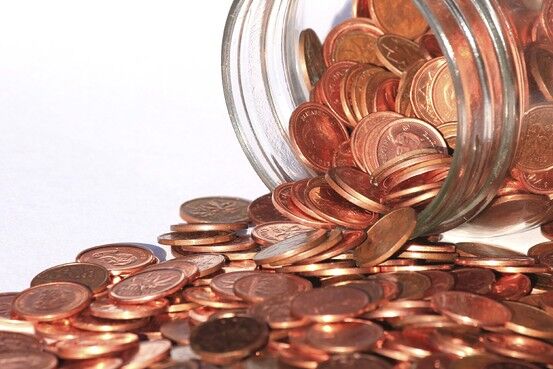Why America Should Ditch the Penny

It costs the US mint 1.7 cents to produce one penny.
September 15, 2021
Imagine the last time you received a penny. What did you do with that penny? Spend it somewhere? Probably not. Chuck it in the tip jar? Maybe. Toss it into your wallet or purse and forget about it? Incredibly likely. So answer this rhetorical question: what use does America have for pennies? Actually, I’ll answer it for you: none. So let’s ditch them.
However, some nay-sayers believe that there are good reasons
to keep these ludicrous copper discs around. So let’s go over some of these alleged “reasons” and why they are a load of hooey.
The first common misconception is that prices will rise if we get
rid of the penny. But rise by what? According to CGP Grey, Canada, New Zealand, Australia and other countries that are economically and culturally similar to the US have all gotten rid of their one-cent coins. Their cash transaction prices round to the nearest five or 10 cents, i.e. an unnoticeable sum. Sometimes one can even save a few cents. I know small bits of money add up over time, but this is such a small amount that it is not worth worrying about.
Some people also naively believe that one actually can spend pennies at stores. What these people are saying is that they pay with exact change when paying in cash. Are they seriously going to stand at the register and dig through their wallet or purse
to find those two pennies to pay for two Snickers bars with exact change, much to the annoyance of the cashier and everyone standing behind them? These people are menaces. And if they don’t pay with exact change, what are they going to do with thosepennies they get back, stuff them in their money-carrying devices? Have fun jingling like Santa’s sleigh when walking around.
People’s next response would be that one can dispose of pennies into machines that take coins. But where? According to CGP Grey, parking meters, vending machines or any other machine that accepts coins as a way to pay for things do not accept pennies. The only exceptions are money exchange machines, like CoinStar, which eat up 10 percent of whatever money is put in. At best, pennies cost you time and attention, and at worst they cost you money.
As it is clear to the penny-lovers that they are on the wrong side of the argument, some will typically pull out the last resort: if the government continues to make the penny, it can’t be completely useless.
Oh boy do I wish you were right. John Green angrily rants that it costs the US mint 1.7 cents to produce one penny. With the amount of them produced each year, the math works out to the US losing $70 million per year at the mint. America is losing money in the process of making money. Again citing Green, the only group that does benefit from penny production is Jarden Zinc Products, supplier of the zinc to make pennies. I can bet that you have never heard of them before. The government could definitely put that $70 million to better use.
The only rational thing to do then would be to melt down these suckers to use the metal for something else. But somehow, when people try to bring some use to the useless penny, the US government bans the melting down of American currency like the inefficiency fans that they are. Honest Abe has got them by the coin bags.
One more point that you did not ask for: the buying power of the already useless coin is going down every year due to inflation, a factor which eliminated the half-cent coin in 1857. I bet you are thinking right now, ‘A half-cent coin? What were we, stupid?’ Well, you are about to be dumb-struck.
When the half-cent coin’s life was ended, one could purchase more with one of those than with a dime today, according to CGP Grey. So by the same logic, the penny should have been on the chopping block long ago.
To conclude, the American penny has zero benefits and a myriad of associated costs. That is the exact recipe for uselessness. The penny is a drag, so let’s get rid of it. I hope some of you readers think I’ve made “cents.”










nick • Jan 24, 2024 at 10:32 am
im also using the same topic and this is an amazing website
Meia • Jan 21, 2024 at 10:56 am
I’m writing an essay about this same topic. I love this so much, I showed my English teacher this and she was laughing all the way through. You really ate on this Carter. I’m now your #1 fan.